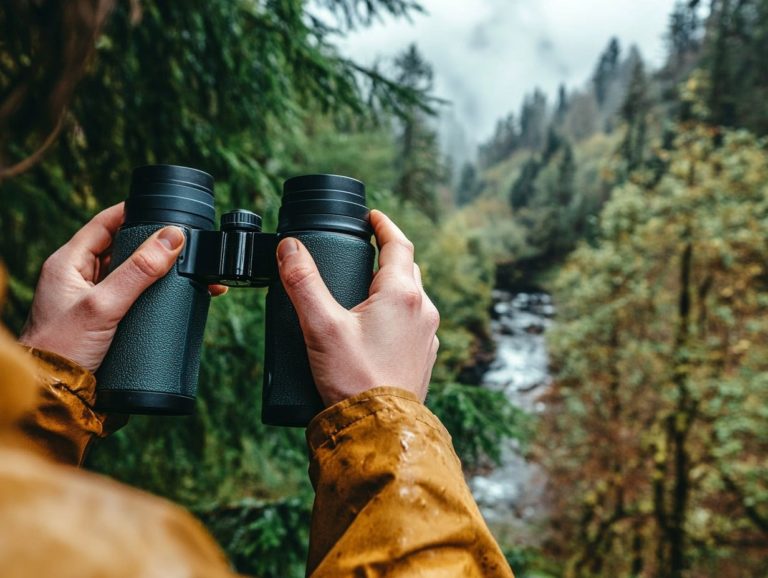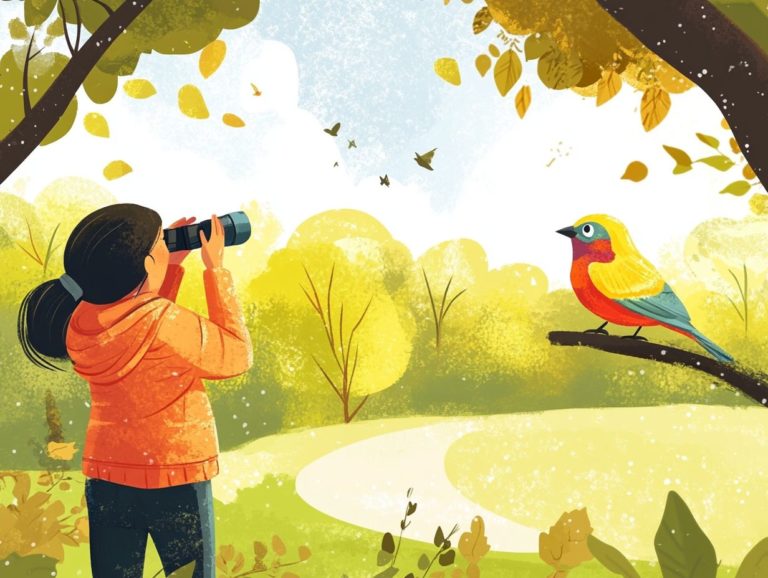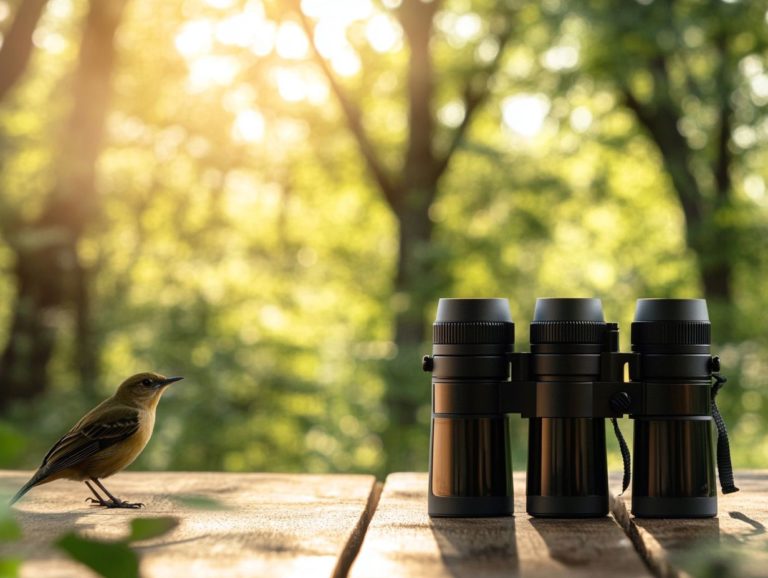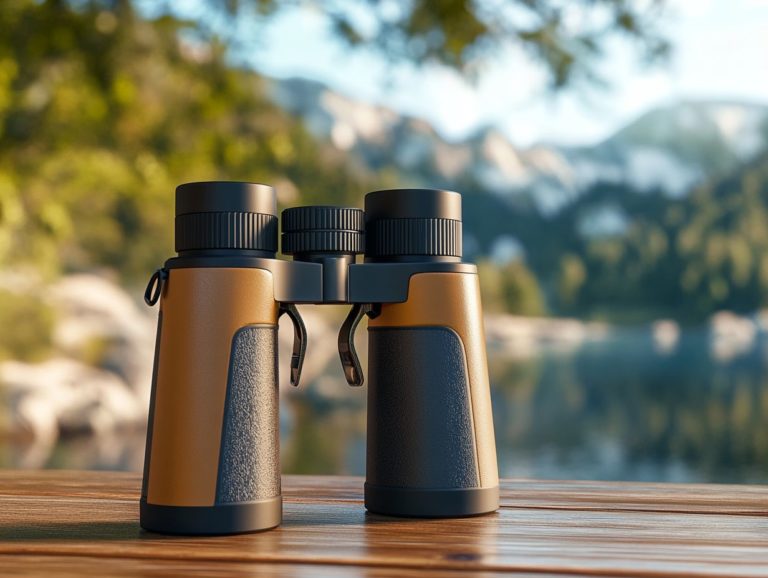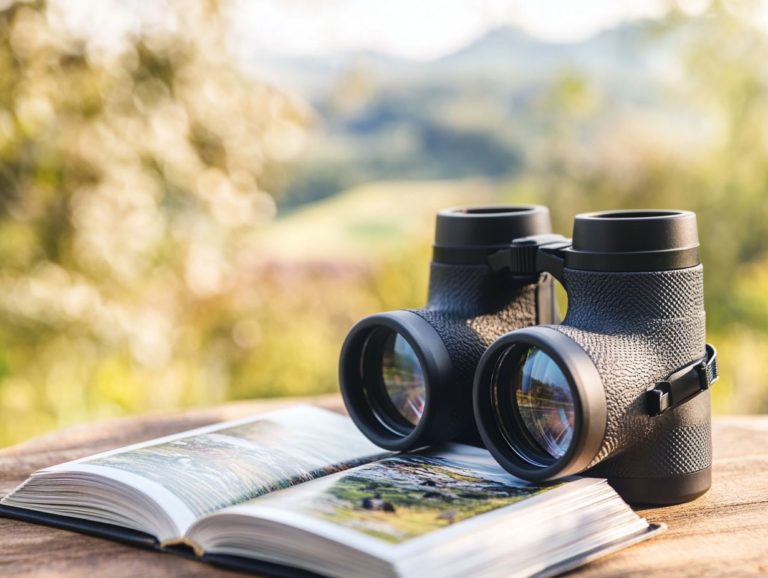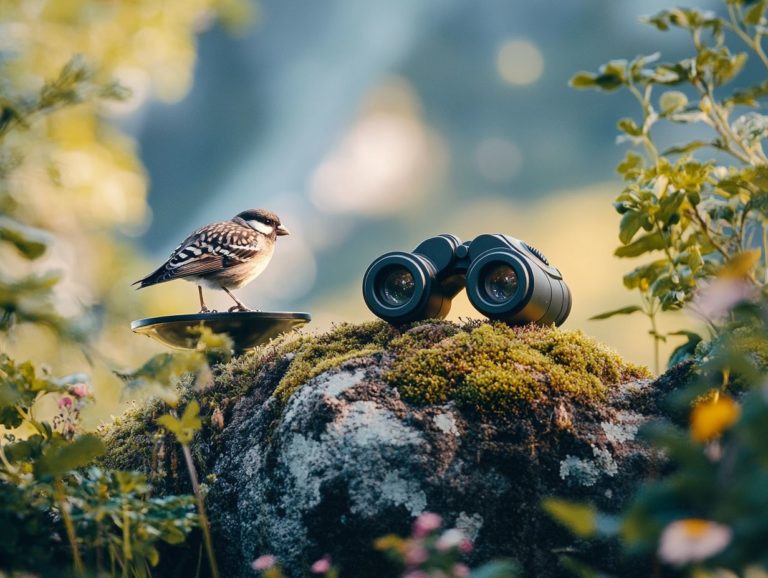How to Adjust Binoculars for Optimal Viewing
Whether you’re birdwatching, stargazing, or simply soaking in a breathtaking view, having well-adjusted binoculars can truly elevate your experience.
This guide delves into the essential components and functions of binoculars, highlighting why proper adjustments are vital. You ll find a step-by-step approach to achieving the clearest and most comfortable viewing possible.
From fine-tuning your device to troubleshooting common issues, this guide encompasses everything you need to know to keep your binoculars in peak condition for every adventure.
Contents
- Key Takeaways:
- Understanding Binoculars
- Importance of Properly Adjusted Binoculars
- Basic Steps for Adjusting Binoculars
- Fine-Tuning Your Binoculars
- Troubleshooting Common Issues
- Overcoming Binocular Challenges
- Maintaining Properly Adjusted Binoculars
- Frequently Asked Questions
- How do I adjust binoculars for optimal viewing?
- What is the purpose of adjusting binoculars?
- Can binoculars be adjusted for individual eyesight?
- What should I do if I am having trouble adjusting my binoculars?
- Can I adjust my binoculars while wearing glasses?
- Do I need to adjust my binoculars every time I use them?
Key Takeaways:
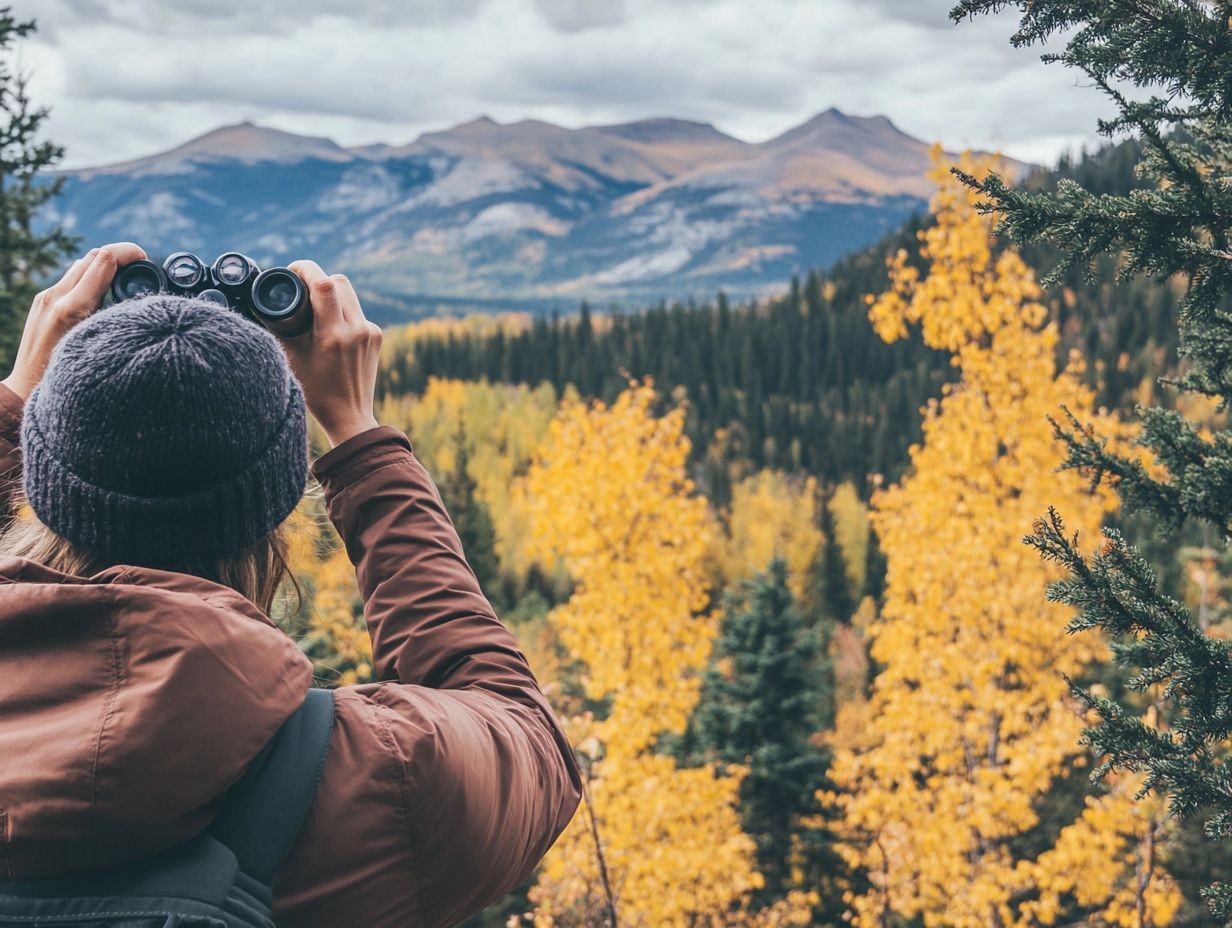
- A properly adjusted pair of binoculars is crucial for optimal viewing.
- Know the parts of your binoculars to adjust them right.
- Regular maintenance and fine-tuning can further improve your binoculars’ performance.
Understanding Binoculars
Grasping the fundamentals of binoculars is crucial for anyone with a passion for wildlife observation, especially for birdwatchers eager to appreciate the stunning details of birds in their natural environments.
Binoculars are not just accessories; they are essential optical instruments that elevate your viewing experience, enabling you to see intricate details and distant subjects with remarkable clarity.
The sophisticated design of binoculars encompasses vital components like eyecups which help block out light for a clearer view focusing rings (the knobs you turn to make the image clearer), and settings that help correct vision differences between your eyes. Each element plays a significant role in optimizing image focus and ensuring your comfort while viewing, making binoculars essential tools for your outdoor adventures.
Parts and Functions of Binoculars
Understanding the parts and functions of binoculars is essential for grasping how these remarkable optical systems operate, allowing you to observe wildlife with remarkable clarity and precision.
Key components include the eyecups, which offer comfort during extended use, focusing rings that fine-tune image sharpness, and diopter adjustments that account for individual vision differences.
These features significantly enhance your overall viewing experience. For instance, adjustable eyecups allow you to create a customized fit that reduces light entry and sharpens your focus on the subject at hand. The focusing ring is crucial for fine-tuning the image, enabling you to effortlessly switch between varying distances a must when tracking moving wildlife.
The diopter adjustment ensures that both eyes see a crisp image and compensates for any disparities in vision. Properly calibrating these components maximizes image clarity and helps prevent eye strain, making your wildlife observation more enjoyable and effective.
Importance of Properly Adjusted Binoculars
Properly adjusted binoculars can transform your viewing experience! They elevate the visual experience for birdwatchers and wildlife enthusiasts alike.
A well-calibrated binocular gives you the power to achieve crystal-clear focus on distant subjects, allowing you to truly appreciate the intricate details of wild birds in their natural habitats.
Proper adjustments enhance image clarity and ensure your comfort during long periods of outdoor exploration. This is crucial for mastering effective birdwatching techniques. Don’t miss out on the beauty of wildlife! Take a moment to adjust your binoculars for the best view.
Why Adjusting Binoculars is Necessary
Adjusting your binoculars is essential for achieving optimal image clarity and comfort, especially if you wear eyeglasses or have varying vision. To learn more about this, check out how to properly hold binoculars for best viewing.
Without proper adjustments, you might find it challenging to focus clearly on stationary objects, which can detract from the joy of observing wild birds.
This lack of clarity can lead to frustration, as those fine details like the intricate plumage of a warbler or the subtle behaviors of a hawk may blur into oblivion. Improper adjustments can also result in eye strain, making those long observation sessions uncomfortable.
For example, if the binoculars aren t aligned correctly, you could end up seeing double, making it difficult to concentrate on your feathered friends.
To avoid these pitfalls, take a moment to ensure the eyecups are properly configured and fine-tune the diopter setting to suit your eyesight. These simple adjustments can significantly enhance your enjoyment and provide a more fulfilling birdwatching experience.
Basic Steps for Adjusting Binoculars

A comprehensive step-by-step guide for adjusting binoculars is invaluable for both novice and seasoned birdwatchers aiming to elevate their wildlife observation experience.
The primary steps include:
- Adjusting the interpupillary distance to perfectly align the eyepieces with your eyes.
- Ensuring the neck strap is comfortably positioned for ease of use.
- Fine-tuning the distance adjustment for optimal image focus.
Each of these adjustments is crucial for achieving a clear and comfortable viewing experience, especially when observing wild birds in their natural habitats.
Step-by-Step Guide for Adjusting Binoculars
The step-by-step guide for adjusting binoculars gives you the power to calibrate your binoculars for the ultimate viewing experience, but it’s also important to know how to test binoculars before buying them.
You ll start by adjusting the interpupillary distance, aligning the eyepieces with your eyes. Then, fine-tune the focusing rings to achieve optimal image clarity.
Next, check the diopter adjustment, a setting that adjusts for differences in vision between your eyes, ensuring sharp images that cater to your unique eyesight.
It s crucial to pay attention to the alignment of the optical path, keeping those viewing lines parallel to avoid discomfort during extended birdwatching sessions.
As you navigate these adjustments, be mindful of common pitfalls like overlooking the diopter setting or failing to maintain consistent eye distance. These can lead to blurred visuals.
By diligently addressing each of these steps, you ll not only enhance your visual clarity but also elevate your overall enjoyment of observing wildlife.
Fine-Tuning Your Binoculars
Fine-tuning your binoculars is essential! Are you ready to enhance your viewing experience?
This careful adjustment process entails modifying the eyecups to enhance eye relief and tweaking the lens settings for improved image sharpness.
By doing so, you create a seamless experience that elevates your outdoor exploration to new heights.
More Tips for Perfect Viewing
Fine-tuning settings like focusing rings and rubber eyecups can substantially enhance image clarity and viewer comfort.
For instance, by adjusting the diopter, you can compensate for any differences in vision between your eyes, allowing you to catch the fine details of a bird’s plumage in crystal-clear focus.
Properly positioning the rubber eyecups is equally important; it prevents unwanted light from seeping into the lens and reduces strain during long observation sessions.
These adjustments are especially valuable in bright, cluttered settings like forests or wetlands, where lighting and background can pose visibility challenges.
When birdwatching at dawn or dusk, optimizing these settings further enhances clarity, making it easier to appreciate the subtle colors and behaviors of birds.
Troubleshooting Common Issues
Troubleshooting common issues with binoculars is essential to maintain image clarity and ensure a comfortable viewing experience while birdwatching.
You may encounter challenges like misalignment, blurry images, or difficulties in focusing. Don’t let blurry images ruin your birdwatching adventure!
By quickly addressing these issues, you ll enjoy a seamless birdwatching experience and fully immerse yourself in the beauty of nature.
Overcoming Binocular Challenges
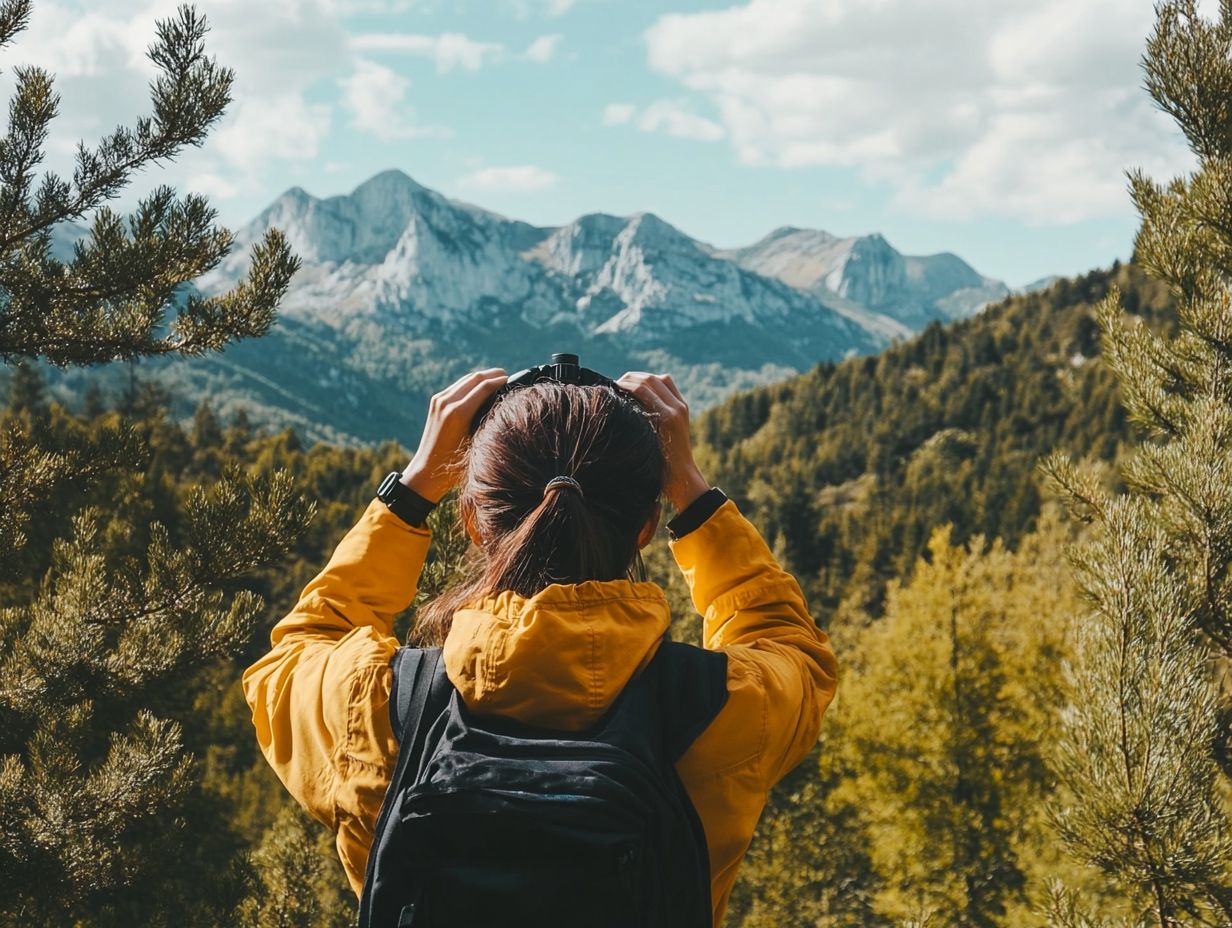
When faced with common binocular issues, it’s crucial to apply effective strategies that will restore image clarity and elevate your overall viewing experience. You might encounter challenges such as focusing, misaligned eyepieces, or discomfort during extended use.
To tackle focusing difficulties, start by adjusting the central focusing wheel with care until a sharp image reveals itself. If you find that misalignment is a problem, simply utilize the diopter adjustment on one eyepiece to fine-tune your view.
For lasting comfort, choosing binoculars with a comfortable design and a proper grip can make all the difference. Consider investing in a padded harness to alleviate strain on your neck. Remember to take regular breaks to rest your eyes; this habit will help you maintain optimal focal performance and fully enjoy observing wildlife.
Maintaining Properly Adjusted Binoculars
Maintaining well-adjusted binoculars is essential for achieving long-lasting performance and optimal viewing experiences, especially if you re passionate about birdwatching or field biology.
Engaging in regular maintenance practices like cleaning the lenses and ensuring proper adjustments significantly contributes to the longevity of your binoculars and enhances the clarity of the images you observe.
Best Practices for Maintaining Your Binoculars
Implementing best practices for maintaining your binoculars is essential for ensuring these optical systems perform at their peak and deliver the finest viewing experience. By consistently using lens covers when your binoculars are not in use, cleaning the eyecups, and storing them in a protective case, you can prevent damage and keep the image clarity sharp.
It s essential to regularly check the alignment and focus of your binoculars to guarantee they provide those crisp images, especially during those pivotal birdwatching moments. Cleaning the lenses with a soft, lint-free cloth will eliminate dust and smudges, enhancing your visibility. Keeping your binoculars dry and away from extreme temperatures is key to preventing internal fogging and maintaining the integrity of the seals.
Inspect the straps and hinges for wear to significantly extend the lifespan of your device. Investing just a few minutes in these maintenance tasks can reward you with years of clearer views and enhanced enjoyment during your outdoor adventures.
Frequently Asked Questions
How do I adjust binoculars for optimal viewing?
To adjust binoculars for optimal viewing, follow these steps:
- Start by placing your binoculars against your eyes and look through them.
- Adjust the distance between the two barrels until you see one clear circular image.
- Next, adjust the eyepieces by twisting them left or right until you see a clear image.
- Once you have a clear image, adjust the focus wheel in the center until the image is in sharp focus.
- Keep making small adjustments until the image is perfectly clear and in focus.
What is the purpose of adjusting binoculars?

The purpose of adjusting binoculars is to ensure that you have a clear and comfortable view through them. Adjusting the distance and focus of the binoculars allows you to see a single, clear image rather than two separate, overlapping images.
Can binoculars be adjusted for individual eyesight?
Yes, most binoculars have a feature that allows for individual eye adjustments. This is usually done through the eyepieces, which can be twisted to compensate for differences in eyesight between the left and right eye. This ensures that both eyes have a clear and comfortable view through the binoculars.
Ready to enhance your outdoor adventures? Grab your binoculars and get started!
What should I do if I am having trouble adjusting my binoculars?
If you’re struggling to adjust your binoculars, here are some quick tips:
First, ensure you’re in a well-lit area for a clear image. Next, keep your eyes relaxed and don’t strain them.
Take breaks if you need to and return to adjusting later. If problems persist, check the instruction manual or ask someone knowledgeable.
Can I adjust my binoculars while wearing glasses?
Yes! Most binoculars can be adjusted easily with glasses on. Adjust the parts you look through to their maximum distance.
If you see a circular image, you can keep your glasses on. If not, tweak the eyepieces until the view is clear and in focus.
Do I need to adjust my binoculars every time I use them?
It’s best to adjust your binoculars each time for the best experience. If you’re the only user and your eyesight hasn’t changed, you might skip this step.
Always check and make small adjustments for optimal viewing.

